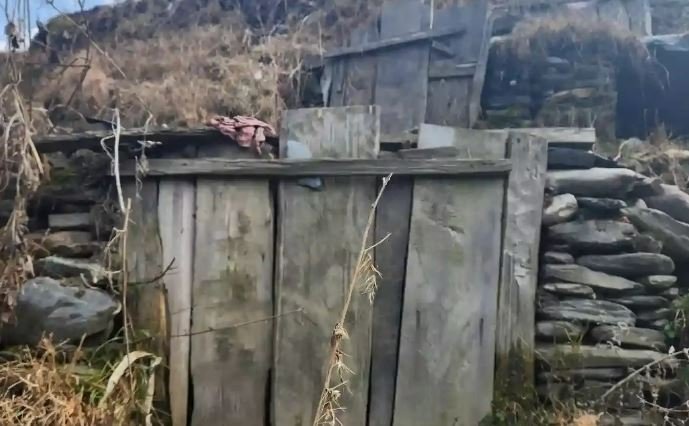In the peaceful highlands of Boniyar tehsil in North Kashmir, where modern infrastructure frequently has trouble getting to, the people of Dudran have quietly kept up a culture that is very important in today’s society that cares about the environment. The Dodh Khots, or milk huts, that can be found all throughout this distant town are more than simply structures. They are proof of the creativity of indigenous wisdom and a way of life that has been around since before modern refrigeration. These huts don’t need energy since they are naturally insulated. For generations, they have been used to store food, keeping milk, yogurt, meat, and other perishable items fresh for a long time. But like many ancient practices that are based on keeping the environment in balance, Dodh Khots are in danger of becoming obsolete—not because they don’t work, but because they aren’t appreciated enough in policy circles and are left out of development stories that focus on modernization and market-driven solutions.
People often stop doing things that are actually good for the environment because they think that development means getting new technology. In the worldwide rush for digital innovation and mechanized life, too many people think that simple, community-based activities like using Dodh Khots are old-fashioned. But here’s the funny part: while countries spend billions on green technologies to cut down on energy use, a little town in Kashmir has a functioning model that doesn’t need electricity or synthetic insulation and still reaches the same aim with no carbon imprint. These structures work well with nature, don’t cost a lot of money, and encourage people to use them together. They are great examples of how rural areas can be strong. But they are not officially recorded, are not supported by rural development programs, and could disappear with the seniors who keep them up. Dudran’s milk huts need to be recognized by institutions and included in policies right away. These aren’t just huts made of mud and wood; they are living examples of sustainable engineering and cultural heritage. Adding them to programs for rural innovation or cultural preservation could help them come back and stay safe. More crucially, it would let policymakers use this approach in other rural and ecologically vulnerable places where energy is still intermittent and keeping food fresh is a daily problem. Getting recognition at the local or national level might also give these communities the tools they need to fix and improve on traditional designs, which would help pass down knowledge and skills from one generation to the next. With the correct help, Dodh Khots might potentially become community businesses, such places to make organic dairy products, places for agri-tourism, or even historical locations that are interesting to both tourists and researchers. In Kashmir, where climatic vulnerability and political volatility often intersect, supporting local sustainable methods is not simply smart policy—it’s needed governance. Dodh Khots are an example of a type of decentralized, self-reliant resilience that bigger development models often miss. When food security, energy use, and environmental degradation are all closely related problems, we should focus on solutions that come from inside communities and leverage local resources, expertise, and social collaboration. This means that governments and institutions need to change the way they think about old practices. Instead of seeing them as things from the past, they should see them as useful parts of future growth. As we deal with the problems of environmental degradation and rural poverty, it becomes clearer that the best solutions may not always be the most high-tech ones. Sometimes, the answer is to just listen—to the elders who know the land, to the communities that have lived in harmony with it, and to the calm wisdom that comes from years of living. The Dodh Khots of Dudran are not strange; they are a chance. A chance to make rural development more sustainable, encourage climate-friendly solutions that don’t cost a lot, and find new ways to innovate that don’t harm nature but work with it.
In preserving the milk huts, we preserve more than a structure—we safeguard a philosophy. One that respects the earth, values community, and finds dignity in simplicity. It’s time we honour that philosophy not just in words, but through tangible support, policy action, and cultural pride. For what Dudran quietly maintains today could very well be what the world looks to tomorrow.
-From Bold News Editorial Desk




